Project Profile
Project Location
Chicago, ILProject Lead
NeighborSpaceBudget
$100,000Money Needed
$90,000The Calumet River Gateway Garden (CRGG) is a community-designed project that will transform neglected vacant land in South Chicago into a vibrant community asset for all ages. Located next to three affordable housing development that both young families and seniors call home, CCRG will create a gathering place with over 70 newly-installed trees including native oak, catalpa, and pine.
In a neighborhood where access to parks and play spaces is extremely limited, this project will provide a community-driven nature garden, playground, and stormwater management area. Historically, formal public access along the heavily industrialized Calumet River was very limited or non-existent. Restoring public access to the regional waterways will be a significant benefit to the 21,000 people who live within a mile of CCRG, located at the corner of 92nd Street and Buffalo. Intergenerational residents will utilize this restorative garden for family-oriented play, exercise, and stewardship.
Program Partners including NeighborSpace, Chicago Region Trees Initiative, City of Chicago, and Metropolitan Water Reclamation District of Greater Chicago. Community stakeholders and leaders will develop open space and neighborhood leadership teams by being active agents at every stage of development.
CRGG will create a much-needed public greenspace and will be a highly visible project anchoring future economic growth.
Every tree planting project demonstrates impacts that create a more just and sustainable future. NeighborSpace, Chicago Region Trees Initiative, City of Chicago, and Metropolitan Water Reclamation District of Greater Chicago focused on planting trees to create a gathering place for the community and improve the lives of nearby residents.
Human Health
Urban Heat - 8
Active Living - 10
Wellness and Mental Health - 14
Social Health - 11
Social Equity
Site Selection - 7
Community Engagement in Design - 9
Community Participation - 9
Economic Equity - 10
Environment
Climate Action - 9
Water Quality and Quantity - 10
Habitat, Food and Wood Production - 3
Bioremediation - 0
The 17 United Nations Sustainable Development Goals or SDGs are a global call for action. These goals have the power to build a better future for everyone. Investment in this outstanding impact project drives action towards the following goals.
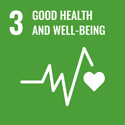
Trees planted next to three affordable housing developments that both young families and seniors call home, CCRG will create a gathering place that will contribute to improved air quality, reduce urban heat effects, and provide recreation and nature-based activities for health and wellness.
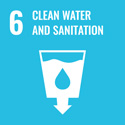
Located near the Calumet River, this project will restore neglected vacant land and plant trees and shrubs in raingardens and throughout the site that filter water and capture rainfall. This project is part of a community stormwater management initiative in Chicago.
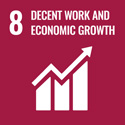
Becoming part of NeighborSpace’s protected land trust community affords participants ongoing connection to greening resources, mini-grants, and learning opportunities. Community participants will take part in tree care and stewardship of the site. CCRG will be a highly visible project anchoring future economic growth.
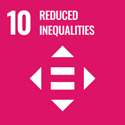
CCRG is a community-designed project that will transform neglected vacant land in South Chicago into a vibrant community asset for all ages. More than 21,000 people live within a mile of the site which is in a neighborhood where access to parks and play spaces is extremely limited. Community stakeholders and leaders will develop open space and neighborhood leadership teams by being active agents at every stage of development.
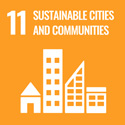
Urban forests make significant contributions to the environmental sustainability, economic viability and livability of cities. CRGG will create a much-needed public greenspace and will promote future community wellness and social resilience. Intergenerational residents will utilize this restorative garden for family-oriented play, exercise, and stewardship.
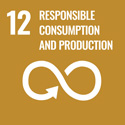
Planting trees in areas with impervious surfaces lowers summer ambient temperatures and saves electricity needed to cool buildings nearby. Trees also act as a natural buffer against wind and cold weather, which saves energy needed to heat buildings in the winter. CCRG will use reclaimed wood from city trees for play areas.
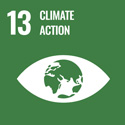
The project will deliver local climate action. NeighborSpace used City Forest Credits’ quantification tools to project values for sequestered carbon dioxide, stormwater reduction, energy savings, and air quality improvements. CCRG is providing opportunities for community engagement and education.
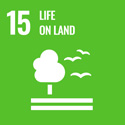
CCRG will preserve the cultural memory of Chicago industry along the Calumet River. Trees, shrubs, and grasses will help create and enhance pollinator and wildlife habitat, increase biodiversity, improve soil quality, and improve water quality and quantity.
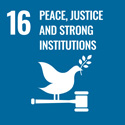
This project design represents an inclusive, community-centric approach to restoring a unique community asset that is currently a vacant, undeveloped lot. There is wide community participation ranging from public meetings to onsite pop-up sessions. The project also reflects city improvement initiatives such as INVEST South/West and community health assessments like Healthy Chicago 2.0.
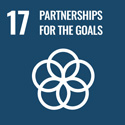
CCRG is a collaborative effort led by NeighborSpace, Chicago Region Trees Initiative, City of Chicago, and Metropolitan Water Reclamation District of Greater Chicago. Nearby residents, early childhood and family community organizations, church and local leadership, historical societies, affordable housing nonprofits, environmental justice organizations, and more are involved in project plans.
